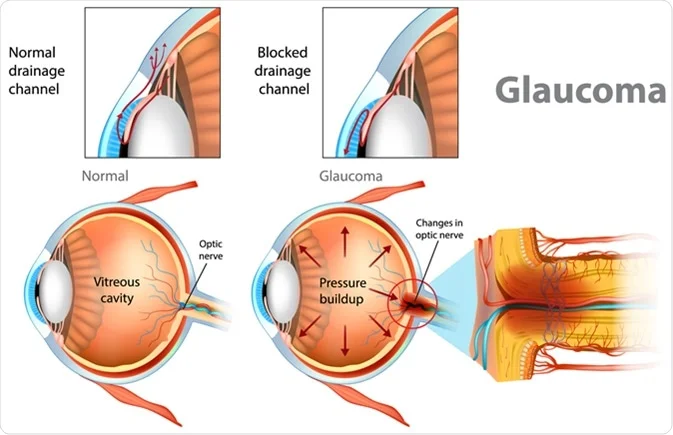The common treatment options for glaucoma aim to lower and control intraocular pressure (IOP) to prevent or slow down the progression of the disease and minimize further damage to the optic nerve. The choice of treatment depends on the type and severity of glaucoma, the patient’s overall health, and their individual response to therapy. Here are the most common treatment options:
1. Medications (Eye Drops or Oral Medications): These are often the first line of treatment for glaucoma and work to lower IOP by either reducing the production of aqueous humor (the fluid in the eye) or improving its drainage. Common types of glaucoma eye drops include prostaglandin analogs, beta-blockers, alpha agonists, and carbonic anhydrase inhibitors. Oral medications are less commonly used and may have more systemic side effects.
2. Laser Therapy:
– Selective Laser Trabeculoplasty (SLT): SLT is a laser procedure that improves drainage of aqueous humor by selectively treating the trabecular meshwork, a drainage structure in the eye.
– Laser Peripheral Iridotomy (LPI): LPI is used to create a small hole in the peripheral iris to improve the drainage of fluid in cases of angle-closure glaucoma.
3. Surgery: When medications and laser therapy are not effective in controlling IOP or are not suitable for the patient, surgical interventions may be considered. Common glaucoma surgeries include:
– Trabeculectomy: This procedure creates a new drainage pathway for aqueous humor to reduce IOP.
– Glaucoma Drainage Devices (Implants): These are small devices surgically placed in the eye to help drain excess fluid and control IOP.
– Minimally Invasive Glaucoma Surgery (MIGS):MIGS procedures are less invasive than traditional surgeries and include options like trabecular micro-bypass stents or the Xen gel stent.
4. Cyclophotocoagulation: In this laser procedure, the ciliary body, which produces aqueous humor, is treated to reduce its ability to produce fluid.
5. Combination Therapies: Some patients may require a combination of treatments, such as medications, laser therapy, and surgery, to effectively manage their glaucoma and achieve target IOP levels.
6. Regular Monitoring: Regardless of the treatment chosen, regular follow-up appointments with an ophthalmologist are crucial to monitor IOP, assess the progression of the disease, and make necessary adjustments to the treatment plan.
The choice of treatment is individualized based on the patient’s specific condition and response to therapy. Glaucoma is a chronic condition that requires ongoing management, and treatment plans may need to be adjusted over time to maintain stable IOP and preserve vision. Early detection and consistent treatment adherence are essential for the successful management of glaucoma.
For more eye-related queries, Consult Dr. Vaidya at one of the Glaucoma Treatment in Mumbai know more information visit in our hospital at Dr. Vaidya Eye Hospital.




